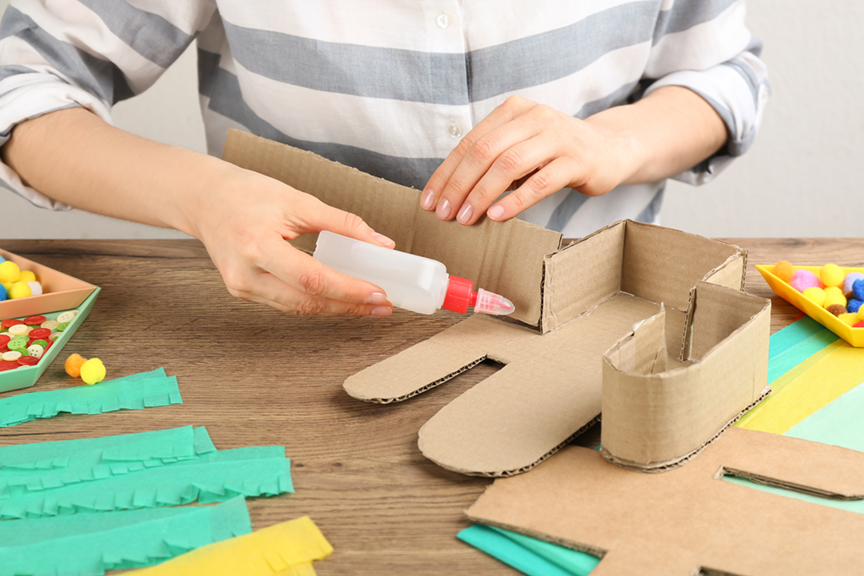
Learn about simple machines by designing arcades.
Grade 5 learners were met with the driving question, “What makes a successful arcade?” Before jumping into the design process, learners were introduced to the concept of simple machines through learning experiences such as discovering simple machines that were present in their school building. Books and videos were used to reinforce and expand upon learners’ knowledge acquisition.
Learners then worked in small groups to complete design challenges that required the design and construction of a specific simple machine to successfully complete a task. Throughout each of these six challenges, learners accessed collaborative strategies to reflect on and revise their designs. Each challenge offered opportunities for communication within the group and across groups to meet a common goal, time for collaboration to test and adjust their designs, and opportunities to think critically about how to effectively use materials to create a working device.
Once the exploration was complete, and learners had a deeper understanding of simple machines and how they make work easier, they were introduced to the story of Caine’s Arcade. This story is about a child who builds an arcade entirely out of cardboard and opens it to the public. At this time, the Grade 5 learners recognized that many of the younger learners in their school community may have never visited an arcade before (due to COVID-19 restrictions, proximity, and other variables impacting access). The learners agreed that opening an arcade up to their school community would be a positive way to contribute to it and would promote mental wellness among all learners.
To begin the process, learners began by viewing pictures and videos of various arcades. They were invited to share personal experiences with arcades and other venues where high engagement activities were present. Through this research, learners co-created a list of criteria to guide the design and construction of the games, as well as the organization and structure of the venue, including that the game must include two or more simple machines. They worked in pairs to design, create, test, and adapt their arcade games. As the pairs of learners worked together to design and create their arcade games, they were met with challenges and setbacks, which led them to look to the other classmate pairings for support and suggestions. Collaboration and communication within and across groups was critical as learners built off each other’s ideas, and ultimately achieved a successful product, all while promoting stronger relationships among learners.
When games were ready, learners brainstormed the necessary elements to run a successful arcade (tickets, prizes, fun pass, music, lighting, advertising, employees, etc.). They organized and set up the arcade, and then welcomed each classroom in the school. For many learners, this was their first arcade experience. In addition, the arcade was also open for one evening where family members were invited to visit the arcade, which promoted a sense of community.
Mullick, Nirvan. “Caine’s Arcade.” YouTube, 2012.